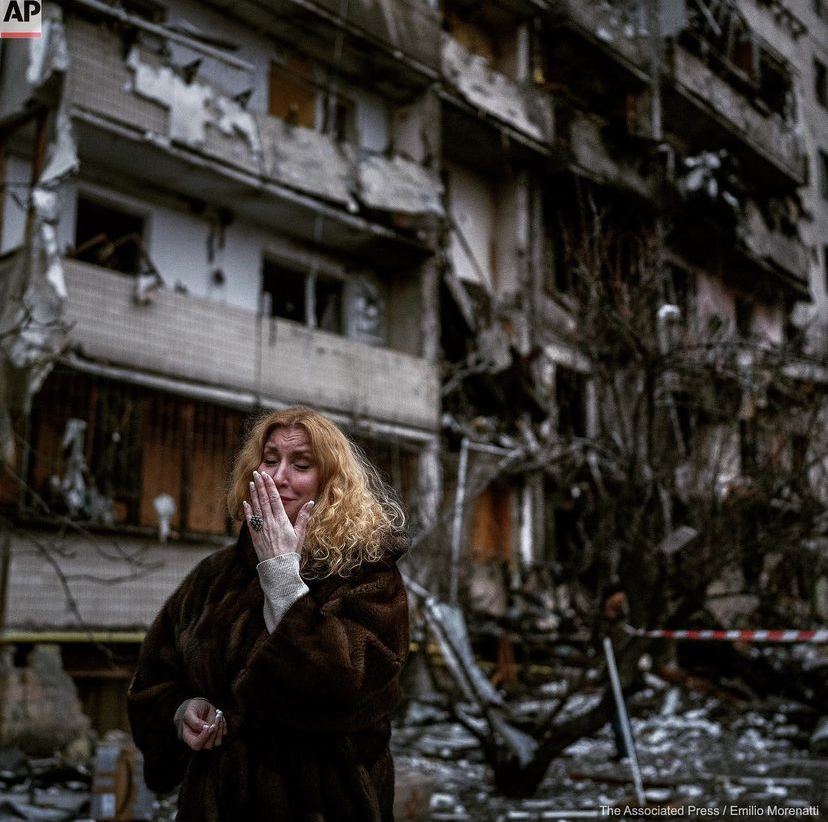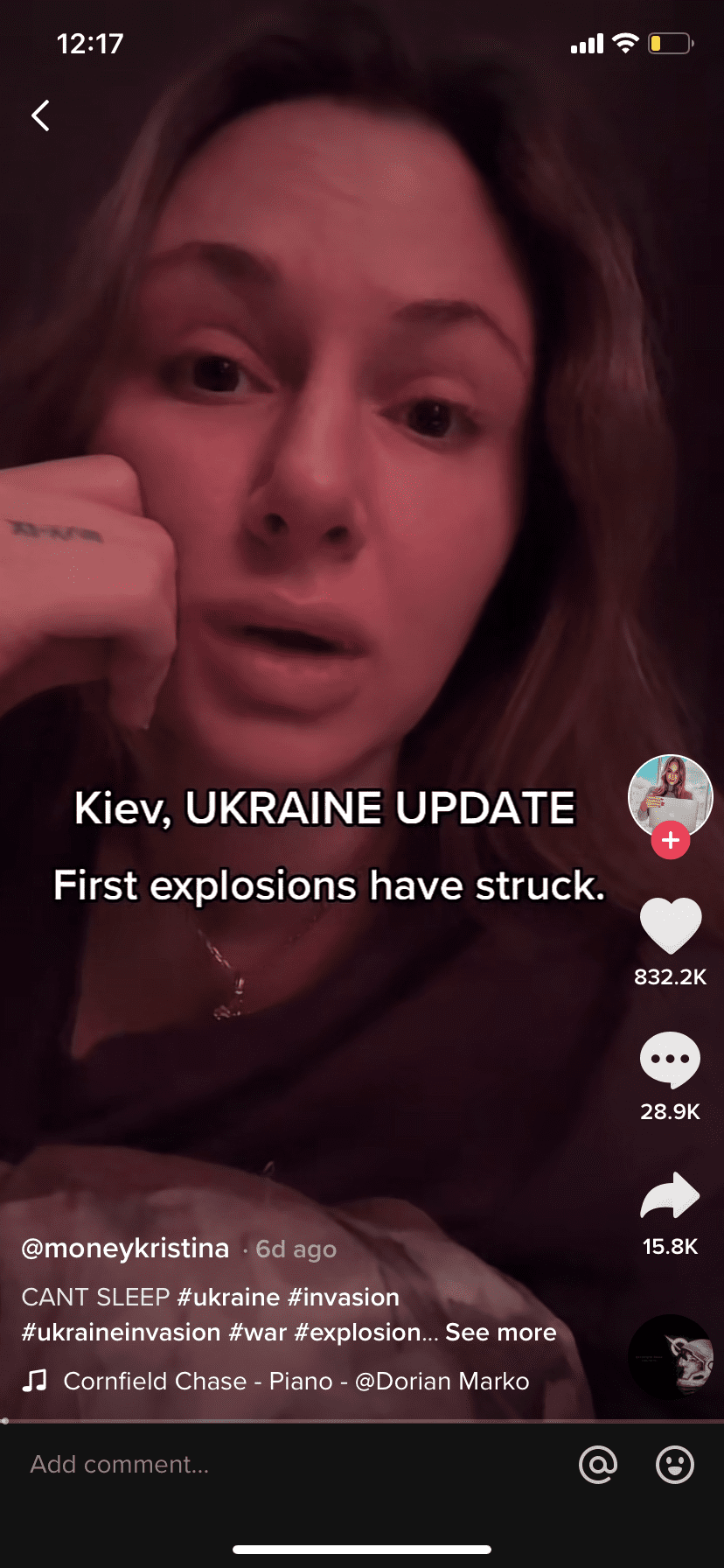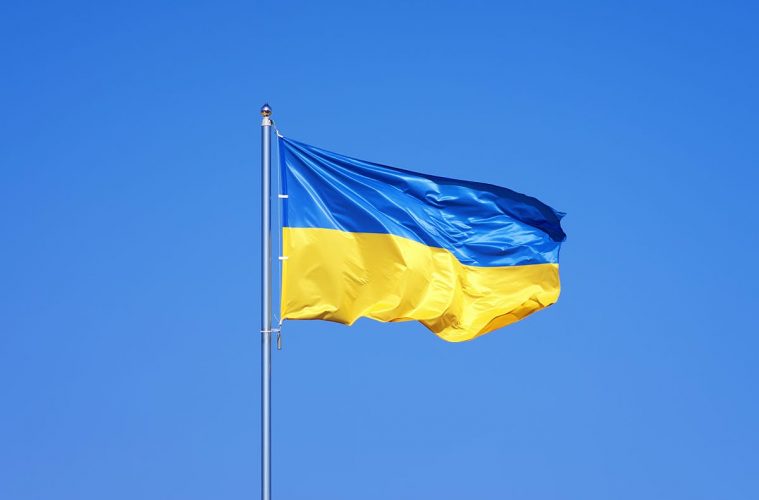In an age of hyperconnectivity, what role has social media played in the recent war on Ukraine?

Photo Credit: Emilio Morenatti
On February 24 Russia launched a wide-scale invasion of Ukraine. Our regular online programming of viral dances and Euphoria breakdowns was disrupted by footage of missiles lighting up the sky, subways turning into bunkers, and brave civilians taking up arms.
Social media has been used as a tool to raise awareness and a means to track ongoing attacks. Users have shared links to places to donate as well as prayers, words of support, and first-hand accounts.
Meanwhile, news outlets and governments have utilized front-line content to create a map of attacks to better understand the situation on the ground.
TikTok specifically has played a role in pushing Ukrainian content as the algorithm favors any and all popular topics.
Ukrainian influencers quickly took to Tiktok to share their experiences during the invasion.

Photo Credit: TikTok
One user, @moneykristina, filmed herself the morning after the first attacks, “it’s getting a little scary”.
“Guys I’m in bed right now recording this because I can’t sleep,” said Kristina to 9 million viewers. “I’m in Kyiv Ukraine, the whole city is up. There have been massive expositions somewhere in the distance but it shook the whole house.”
Kristina has continued to share her life during the invasion including food rationing in light of food shortages and how her family took in two families.
“We’re trying to come up with a menu right now because we’ve taken people in so there’s a lot of us.”
“We’re doing the calculation, we don’t know how long we’re going to be without food because there’s no food at the grocery stores. There’s no gas so we can’t drive all over town looking. So the rationing has begun,” she shared with her 474.4k followers.
“The scariest thing is for the kids. We have two little kids in the household, my daughter who is two and we have a three-year-old little boy.”
However, contrary to what some news outlets have claimed, sharing unfiltered and uncensored content is not new or revolutionary. Social media has played a role in documenting and shaping world events before.
Most recently, in 2020 we saw social media used for political engagement and social activism after a video surfaced of an unarmed Black man, George Floyd, being killed by a White Minneapolis police officer. The protests and uprisings brought systemic racism to the mainstream and lead to positive change including, the removal or reimagining of controversial forms of symbolism.
During the “Arab Spring,” a series of pro-democratic protests, uprisings, and rebellions spread across the Middle East and North Africa, social media was used to organize protests and publicize alternative perspectives and opinions. The movement lead to the eventual forced removal of dictators bringing about new governments and positive change.
These are just two examples of the many politically charged movements we’ve seen played out online. But, just as social media has and can once again be used for positive change it also can be used to spread mass disinformation.
Over the course of the Russian invasion, the dissemination of fake news and propaganda from Russian state-affiliated outlets have created a misinformed view of the conflict.
“There’s a huge amount of confusion and attempts to untangle what is going on on the ground with this escalation,” said Lytvynenko, senior researcher at Harvard University’s Shorenstein Center on Media, Politics and Public Policy.
“The situation is changing minute by minute, and the information is changing with it.”
Social media platforms are scrambling to take action against the spread of disinformation on their platforms.
“We continue to closely monitor the situation, with increased resources to respond to emerging trends and remove violative content, including harmful misinformation and promotion of violence,” a TikTok spokesperson said.

Photo Credit: Twitter
Facebook and Instagram, are no strangers to misinformation having been used by Russia before in an attempt to sway the American election.
Meta has put measures in place to combat the issues including, blocking Russian state-affiliated media, such as Russia Today and Sputnik, in the EU and Ukraine. In addition to this, the company will begin to globally demote content on Facebook and Instagram accounts from Russian state-affiliated media as well as label posts containing links to said media outlets on Facebook and later Instagram.
Google, Microsoft, and TikTok are also carrying out similar bans on content from Russian state-affiliated outlets. Additionally, Meta, Google, YouTube, Microsoft, and Twitter have restricted or banned Russian state-affiliated media organizations from selling ads.


